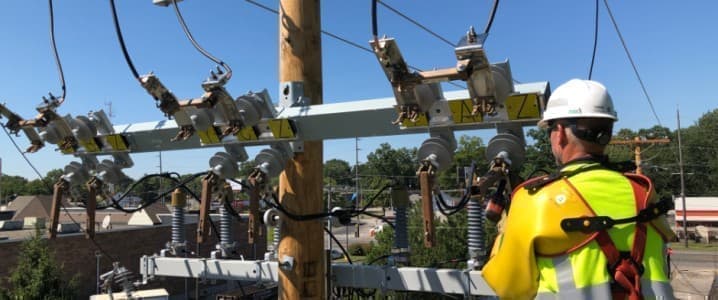Earlier this month, a top Shell executive warned that the Trump administration’s animosity towards offshore wind risks complicating investment decisions for oil and gas as well. Uncertainty was the word Collette Hirstius used. Uncertainty has become the dominant sentiment in energy circles—and it’s not just because of Trump.
Speaking to the Financial Times, Shell’s Hirstius said that “I think uncertainty in the regulatory environment is very damaging. However far the pendulum swings one way, it’s likely that it’s going to swing just as far the other way.” This is an apt observation, only it could be argued that Trump’s policy towards wind, and to a lesser extent solar, is also an example of the pendulum swinging back, after billions of dollars were spent on developing technologies that, contrary to predictions, did not bring electricity prices down. It is this failure of the transition promises to materialize that is changing sentiment in global energy.
Spain is a case in point. This spring, both Spain and Portugal suffered a devastating blackout that authorities and grid operators at the time refused to link to the amount of solar generation at the time. Now, Spain’s grid operator is warning that it could happen again because there are wild swings in voltage. The warning comes days after the European Union’s ENTSO-E—the bloc’s grid operators’ network—published its report on the April blackout, pointing to excessive voltage as the cause.
Related: Exxon Restarts Key Gasoline Unit After Brief Beaumont Refinery Outage
Excessive voltage is not something caused by gas, nuclear, or coal power plants. Swings in voltage are one of the less publicized properties of wind and solar installations, and the thing that forces curtailment during demand troughs, precisely to avoid blackouts. So, grid operators are essentially saying there is a problem with uncontrolled wind and solar, and it could be a serious problem. Facts like this tend to undermine the reputation of the energy transition as the only way forward, with a net zero of acceptable alternatives. So do facts like Germany’s vulnerability to energy price shocks as a result of insufficient gas reserves for the winter season.
Gas major Uniper warned this week that the country could face a bill of 40 billion euros, which is about $46.6 billion, if it failed to keep its gas reserve 90% full—something rather unlikely for peak demand season. Germany has been at the forefront of the energy transition, with massive wind and solar capacity, and yet it needs a lot of gas to survive the winter. Something clearly does not add up, widening the divide between what politicians want to have as an energy system and what is possible to have as an energy system—without blackouts.
This is clearly affecting investment decisions both in the wind and solar sectors, and in oil and gas. Caution is the new black in both parts of the energy world because this pendulum keeps swinging. The International Energy Agency recently issued a Renewables 2025 report, in which it predicted a 50% slump in wind, solar, EV and similar investments in the United States because of the Trump administration’s policies. But it also noted it had revised its growth numbers because of policy changes in China.
China has led the world in both oil and gas demand, and wind and solar installations for years now. China has been used both as an example of how to do an energy transition and as a demonstration that whatever the EU or, say, the UK does about its emissions, China’s emissions continue to grow, and quite significantly, offsetting any decline elsewhere and then some. Yet now China is building additional oil storage capacity while reining in its solar industries to put an end to what has become popular as a race to the bottom.
China, then, this transition leader, is effectively admitting that the subsidy-driven industry growth model does not work over the longer term. All it does is spur a race to the bottom, meaning intense competition, a downward spiral for prices and the resulting proliferation of negative bottom lines and ultimately company failures. Yet governments in European countries, Canada, and Australia are trying to replicate the Chinese model of subsidized transition.
While expecting this model to prompt the twofold increase in wind, solar, hydro, and geothermal capacity by 2030, the International Energy Agency warned the world needs to invest more in oil and gas because field depletion was happening faster than previously assumed. The warning came soon after the U.S. Energy Secretary suggested the IEA remember what it was set up to do—focus on energy security—and stop playing cheerleader for the energy transition.
Big Oil, meanwhile, is doubling down on its recent shift from low-carbon investments to core business, despite all the political uncertainty and complicatedness. Per its own admissions, the industry is doing what makes money—even without all the subsidies that wind and solar have enjoyed in the EU for years and enjoyed in the U.S. for quite a while as well.
Some say the world is bifurcating into those who know the energy transition could never work, so they are securing their future supply of hydrocarbons, and those who choose to ignore evidence of the above and continue to pursue decarbonization policies that only lead to more expensive and less reliable energy. They may well be right.
By Irina Slav for Oilprice.com
More Top Reads From Oilprice.com:

